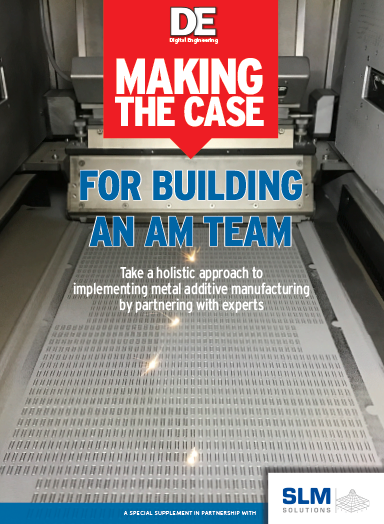September 7, 2018
Metal AM technology can deliver plenty of benefits for the production of limited run, highly customized parts, yet choosing the right solution is more involved than selecting the optimal hardware configuration. Instead, companies need to balance technical requirements with the accessibility of metal AM expertise, aligning with a solution provider that will function in a collaborative role, not just as a vendor.
By partnering with a trusted AM provider to bring metal AM solutions in house, companies gain a leg up leveraging the technology for optimal output. Many companies in the aerospace, medical, and dental industries produce metal AM parts by contracting with service bureaus, but this on-demand approach actually limits the scope of how the technology is deployed because there is little exposure to engineering. If engineers aren’t versed in the nuances of metal AM, they don’t understand how to effectively design new kinds of parts that take advantage of additive manufacturing technology.
“For most companies, metal AM is relatively new and there’s not usually a lot of knowledge about it within any given company,” notes Richard Grylls, technical director for SLM Solutions, North America. “It’s enormously valuable to have the technology in-house to keep it close to engineers, serving as an educational tool to understand what’s possible.”
Beyond pushing the envelope in design, bringing metal AM systems in house via a partnership with a hardware provider can foster the safety and compliance requirements critical for industries like aerospace and medical. In those sectors, metal AM-produced parts are highly regulated and have to meet stringent safety and certification requirements given that they might be part of a jet engine or a surgical implant where failure is not an option. Installing AM metal printers on-site allows in-house engineers to lean on their hardware partner to learn the intricacies of the system so they have the authority to certify how equipment is calibrated, what is required for a part to pass inspection, or make judgments about the quality of a finished part. That direct level of input isn’t possible if the metal parts are outsourced to a metal AM service bureau.
Making metal parts in house also helps companies maintain control over their design intellectual property (IP). Many standard-looking metal AM components have really creative internal features such as intricate channels for gas or fluid flow that aid in part performance. “If you send a drawing of a part to a casting vendor, they know what you are doing,” Grylls says. “The ability to make components in house provides an opportunity to retain all of your own IP.”
Creating the Workflow
Like traditional manufacturing, metal AM involves a series of steps from initial design through outputting files and machine preparation. For example, engineers need to know how to design effectively for metal AM technologies, set up files for optimal output, and effectively perform powder handling and post-processing steps—all areas where a solutions partner can deliver training and hands-on expertise. The right hardware partner can also work with engineering organizations to get them up to speed on materials properties and safety standards, which are critical to ensure metal parts meet the safety and regulatory standards of a particular industry.
When evaluating AM solutions, there are a variety of considerations on both the hardware and vendor front. From a speeds and feeds perspective, size of the build envelope, support for multiple lasers, and the power of the lasers are key differentiators as are powder handling capabilities. For example, SLM Solutions’ mid-size metal AM printer features a 280 x 280mm build envelope, which is significantly larger than the standard 250 x 250 size, accommodating 30% more components. SLM Solutions printers’ file preparation techniques, which are preprogrammed to load and run compared with other systems that pause for extended periods of time in between layers, are also key to boosting productivity. Safety is another big area of differentiation, addressed with a variety of features, including a powder sieve station that eliminates any contact between the operator and the metal materials.
In addition to the actual feature set, organizations should align with an AM hardware provider that has a focus beyond equipment sales. It’s important to collaborate with a trusted provider willing to dig deep into a company’s design goals and workflow challenges while having expert guidance to direct internal engineering teams. By fostering this type of collaborative relationship over the long term, companies are assured of maximizing the impact of metal AM technologies.
Latest News









